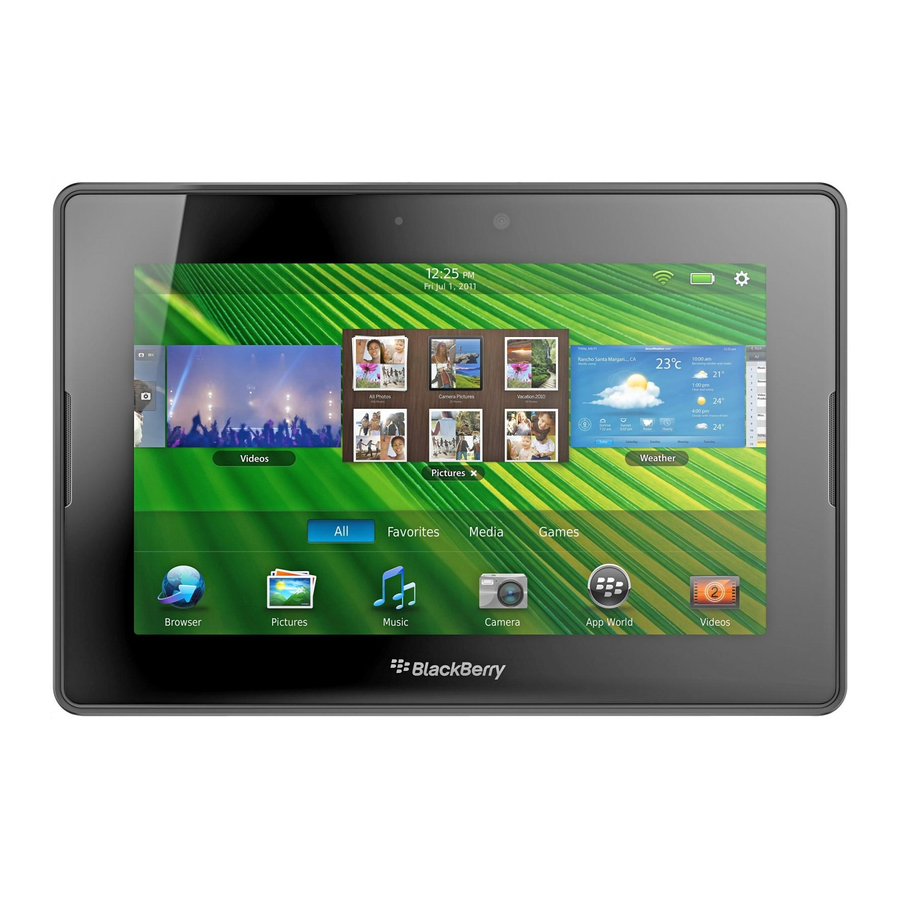UI Guidelines
Screen design
The BlackBerry PlayBook tablet has a landscape-oriented display. In most cases, you should lay out your application in
landscape view. When designing your application, think about ways to create a widescreen experience for users. For
example, position UI components on the sides of the screen instead of the top or bottom of the screen to take advantage of
the additional width.
In some cases, displaying an application in portrait view offers distinct benefits and provides a better experience for users.
For example:
•
Typing: It's easier for users to type with their thumbs when they are holding the tablet in portrait view.
•
Reading: Users are familiar with the layout of content in portrait view, and it provides a shorter width of each line in a
paragraph.
•
Navigating long lists: Users can see more list items in portrait view.
Identify the primary orientation in which users will interact with your application and whether the other orientation offers
distinct benefits. You can lay out your application in portrait view, landscape view, or both views. The BlackBerry PlayBook
tablet is designed to transition seamlessly if users switch between views.
Best practices
•
Place important information near the top of the screen. Think top-down when laying out your screen.
•
Avoid placing content where common interactions too often obstruct it.
•
Position UI components close to where users' thumbs would be when holding the tablet.
•
Use BlackBerry UI components where possible, so that your application can inherit the default behavior of the
component. Users do not have to learn new behaviors for the components that you implement in your application. If
future versions of the BlackBerry PlayBook tablet have different screen sizes, you can avoid rework by using existing
BlackBerry UI components. For more information, see the "UI Components" section.
•
Avoid displaying a splash screen unless your application is resource-intensive and takes a long time to open.
Related information
UI components,
21
Menus
The role of a menu is to move UI components, such as buttons and fields, off the main screen of your application. A menu
can contain functionality that you want to hide to maintain a simple main screen, or settings and options that users less
frequently access. If you implement a menu, users should access it using the "swipe from the top of the screen" gesture.
14
Screen design

